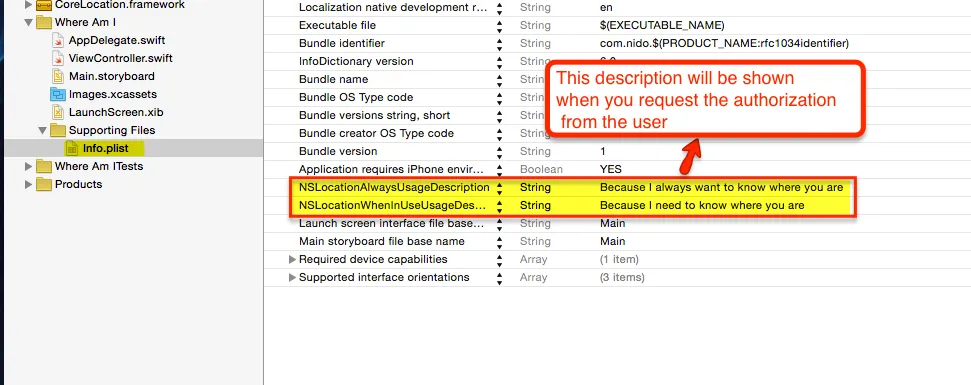我一直在尝试让这个工作起来,现在我来询问一下-如何在Swift中使用CLLocationManagerDelegate方法?我已经把这个放在类的顶部:
var locationManager = CLLocationManager()
我已将以下内容放入我的viewDidLoad方法中:
locationManager.delegate = self
locationManager.distanceFilter = kCLDistanceFilterNone
locationManager.desiredAccuracy = kCLLocationAccuracyBest
locationManager.startUpdatingLocation()
我已经尝试使用这些委托方法,但都没有成功:
func locationManager(manager: CLLocationManager!, didUpdateLocations locations: AnyObject[]!) {
locationReceived = true
}
func locationManager(manager: CLLocationManager!, didFailWithError error: NSError!) {
locationReceived = false
}
我曾尝试在函数前面使用@optional,但Xcode会抛出编译器错误。有什么想法吗?
我也尝试过在函数前面使用@optional,但是这会导致Xcode报错。有什么解决方法吗?
